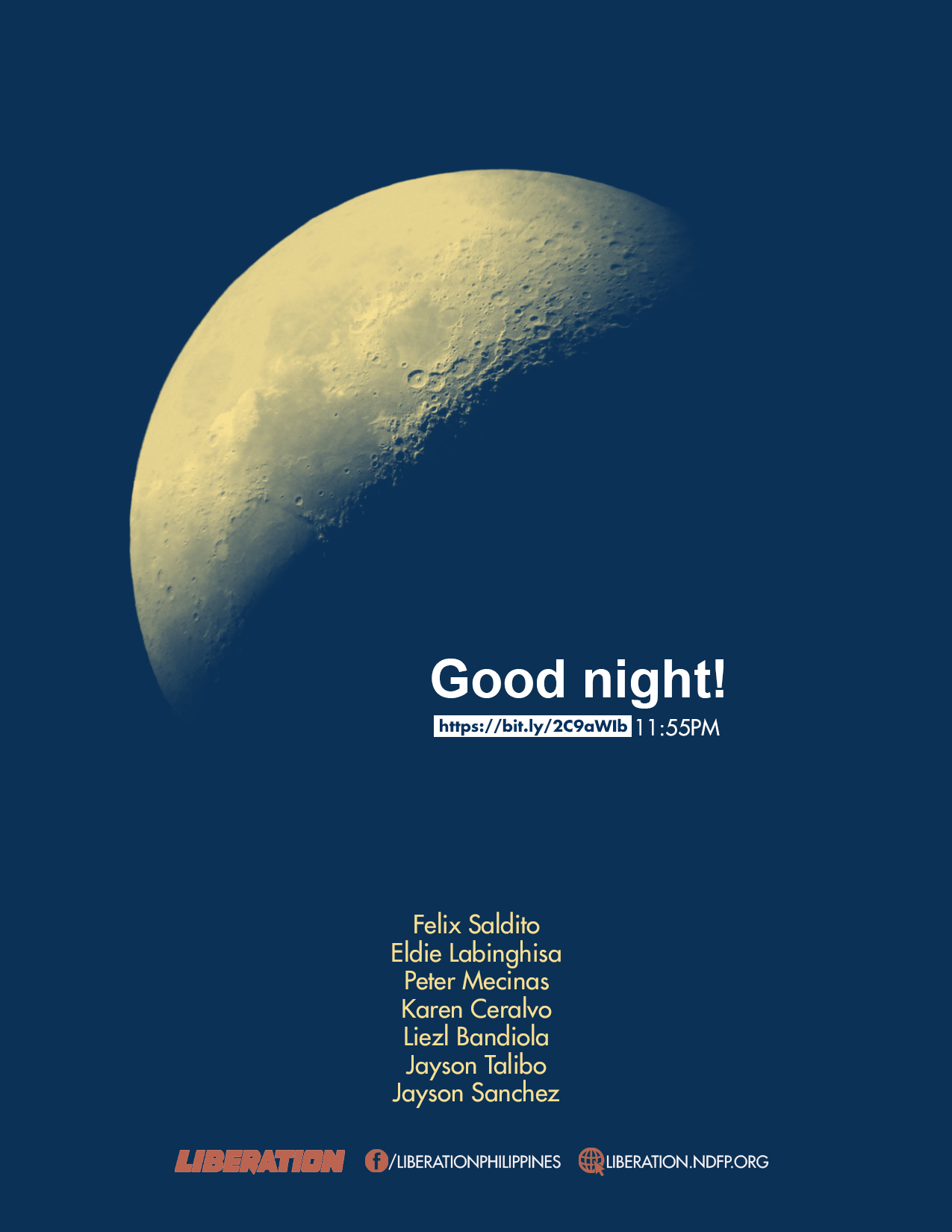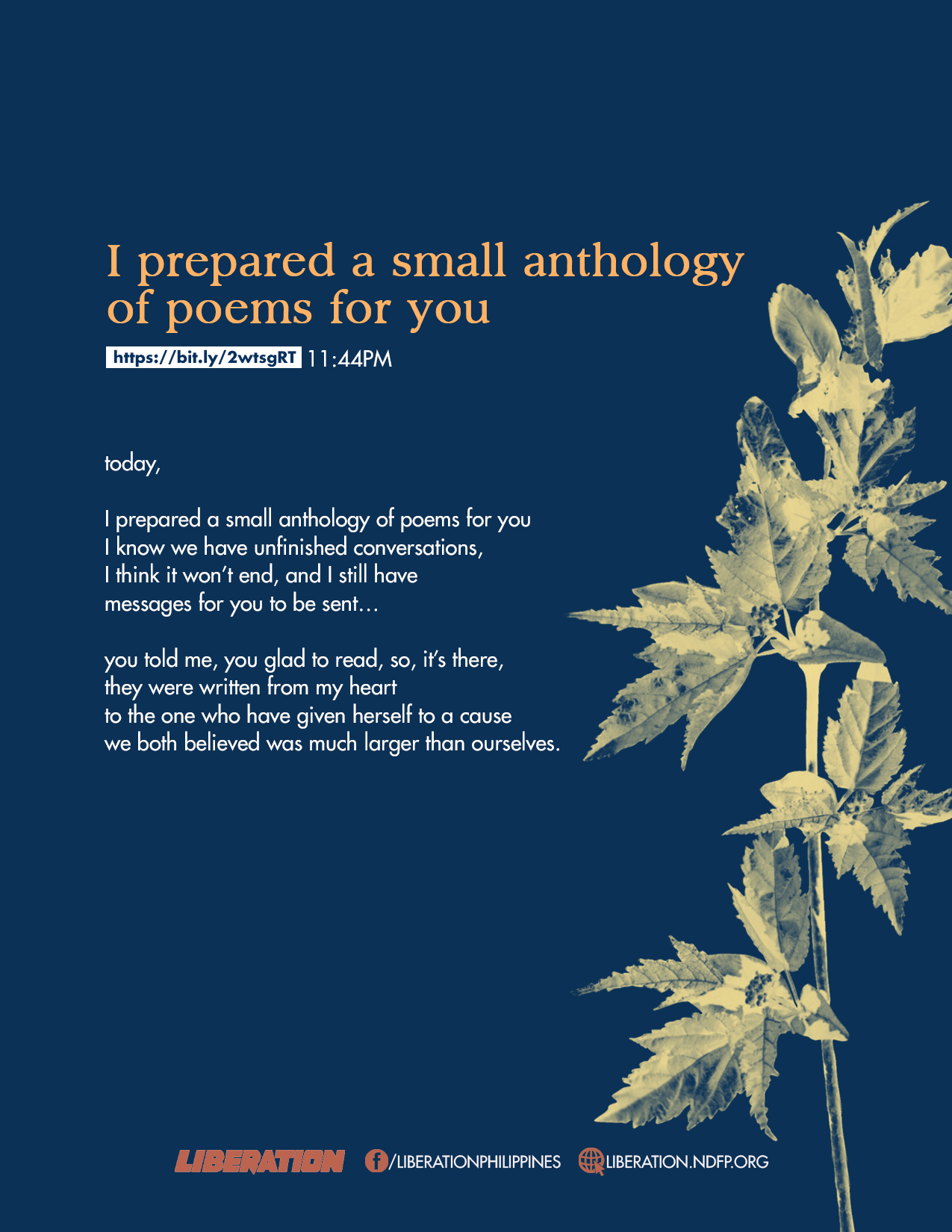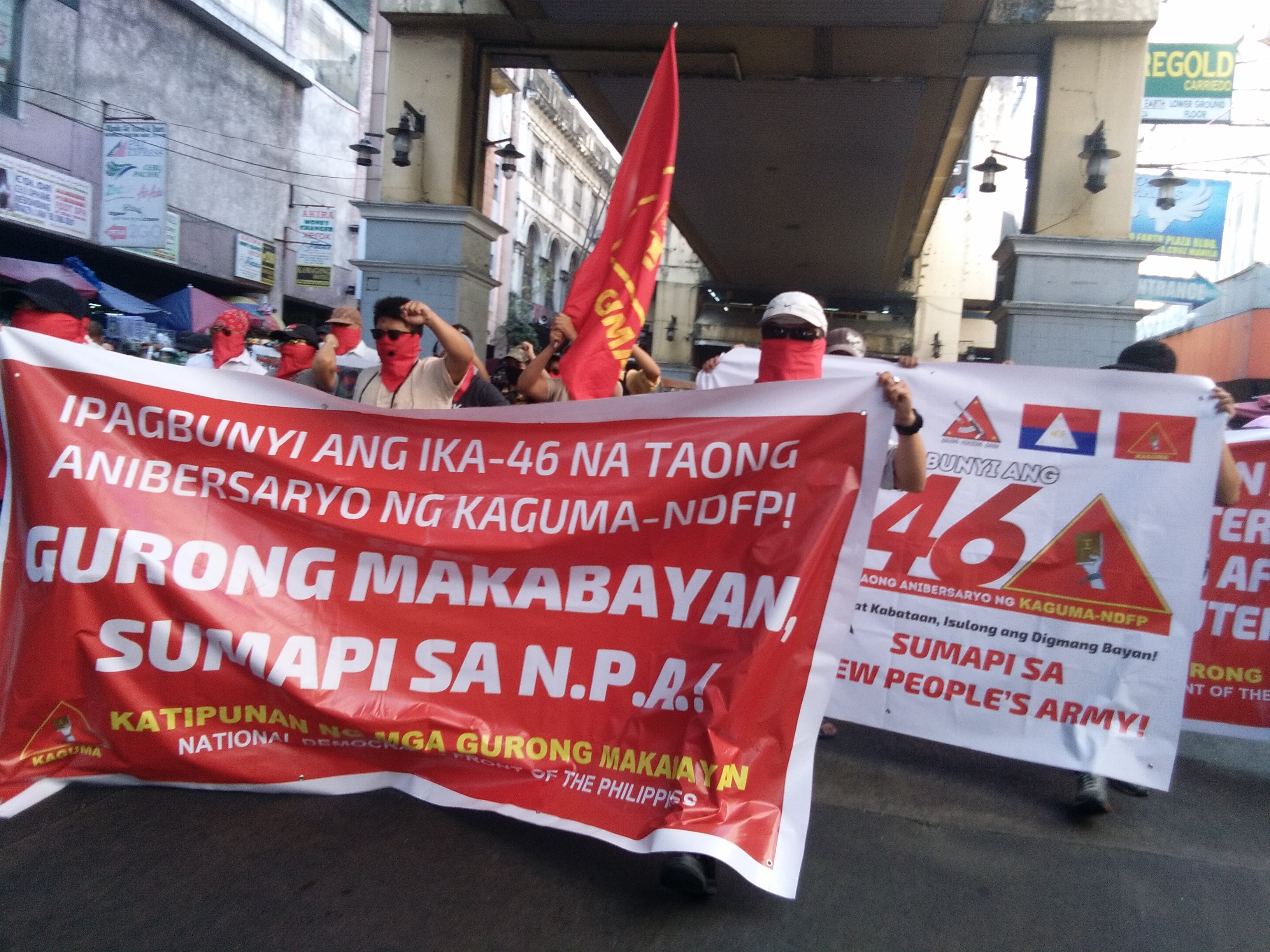Ang Masa

Kasalanang mortal ang pagmamaliit sa kakayahan ng masa na mag-isip at kumilos upang solusyonan ang nakapasan sa kanyang pagsasamantala at kahirapan.
Hindi sabwatan o pakana ng iilan ang magbabago sa lipunan. Ang masa ang magpapasya; sila ang lilikha ng kasaysayan.
#ServeThePeople
#NPArevolutionaries
#CPP50








































